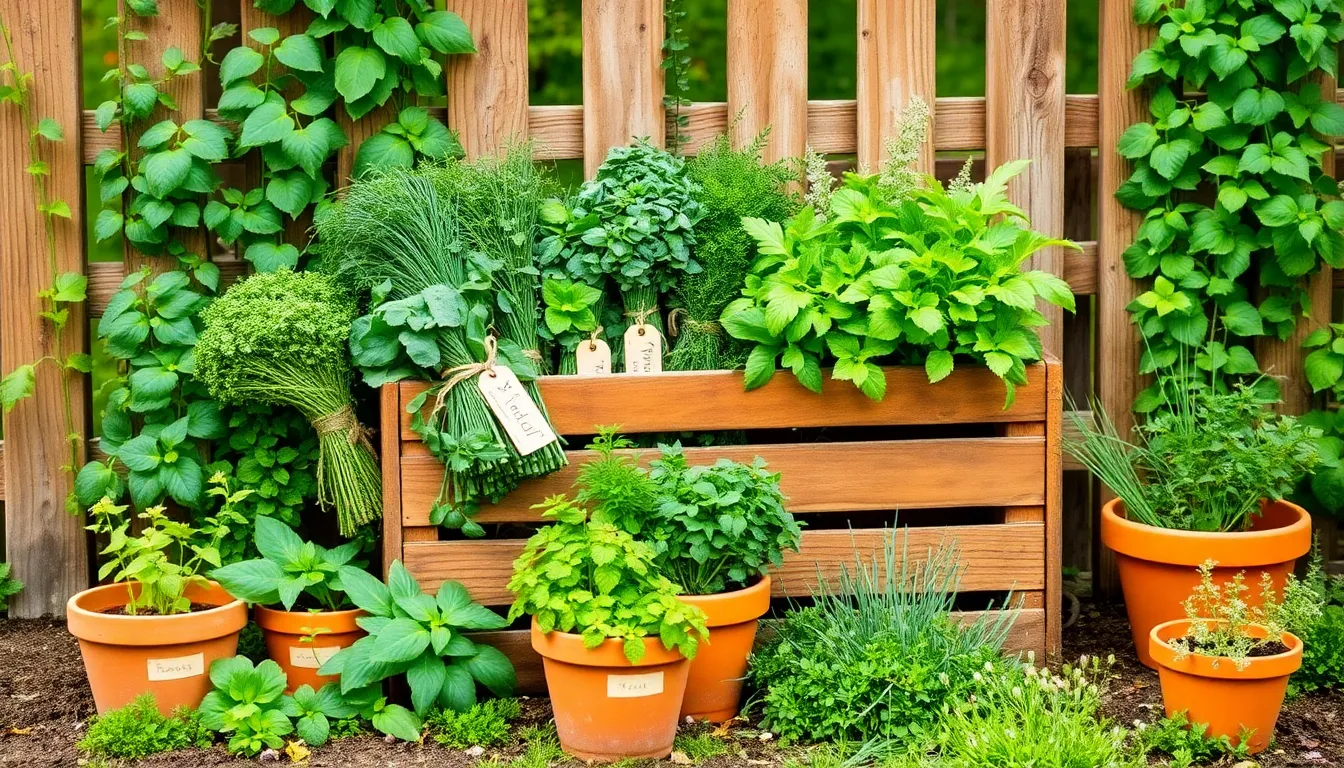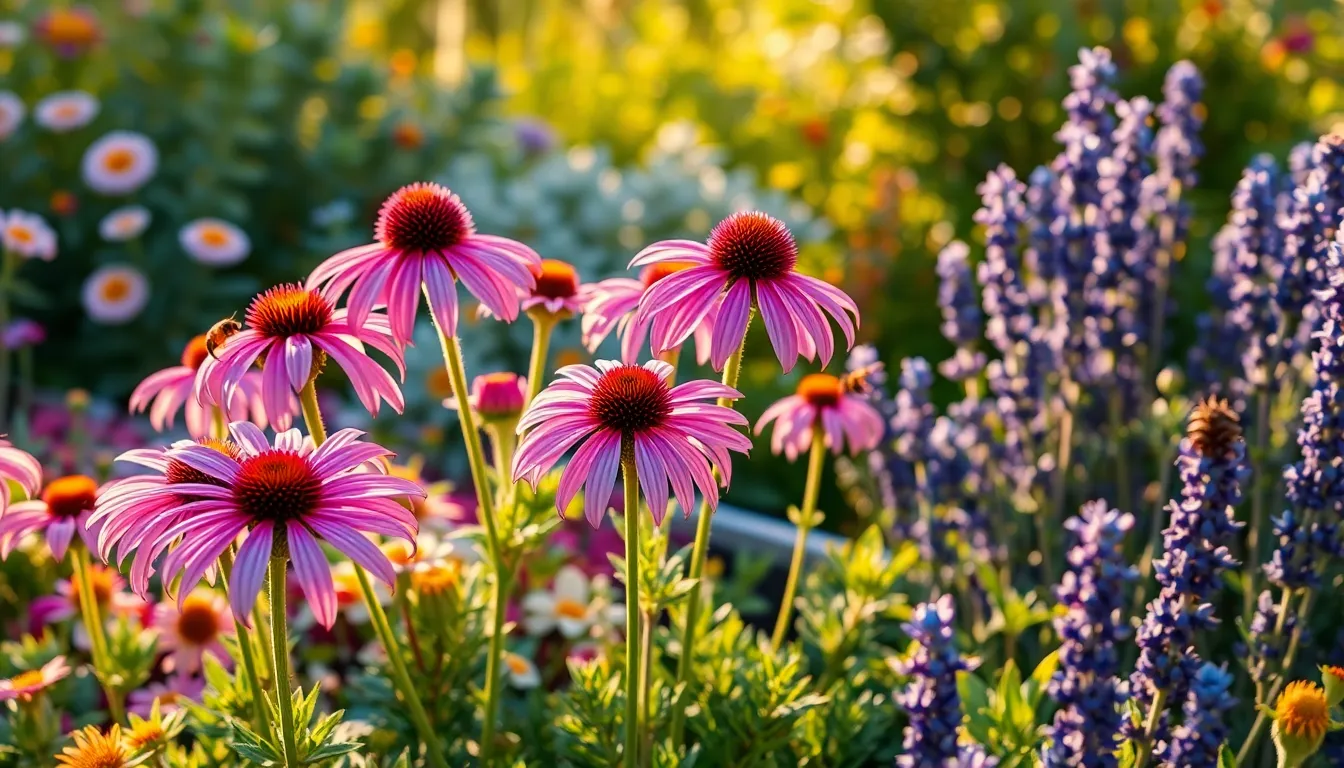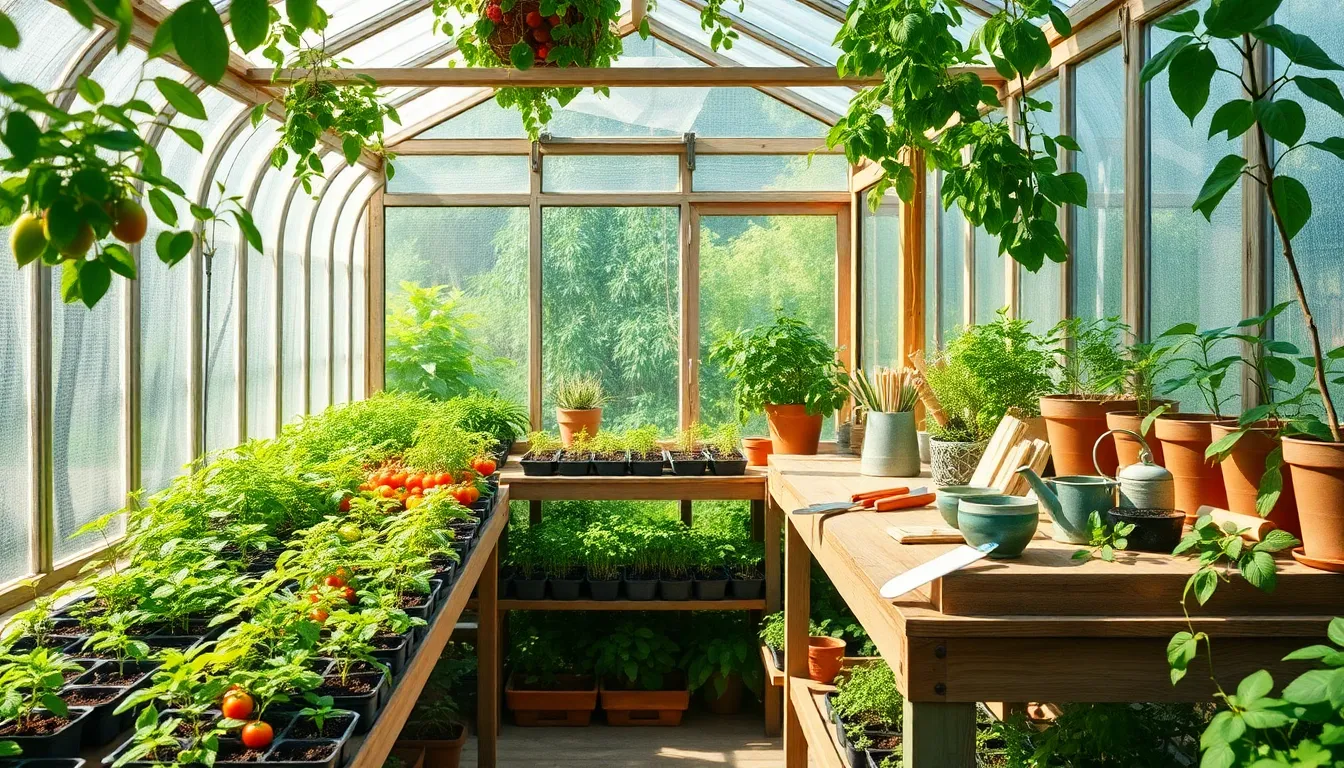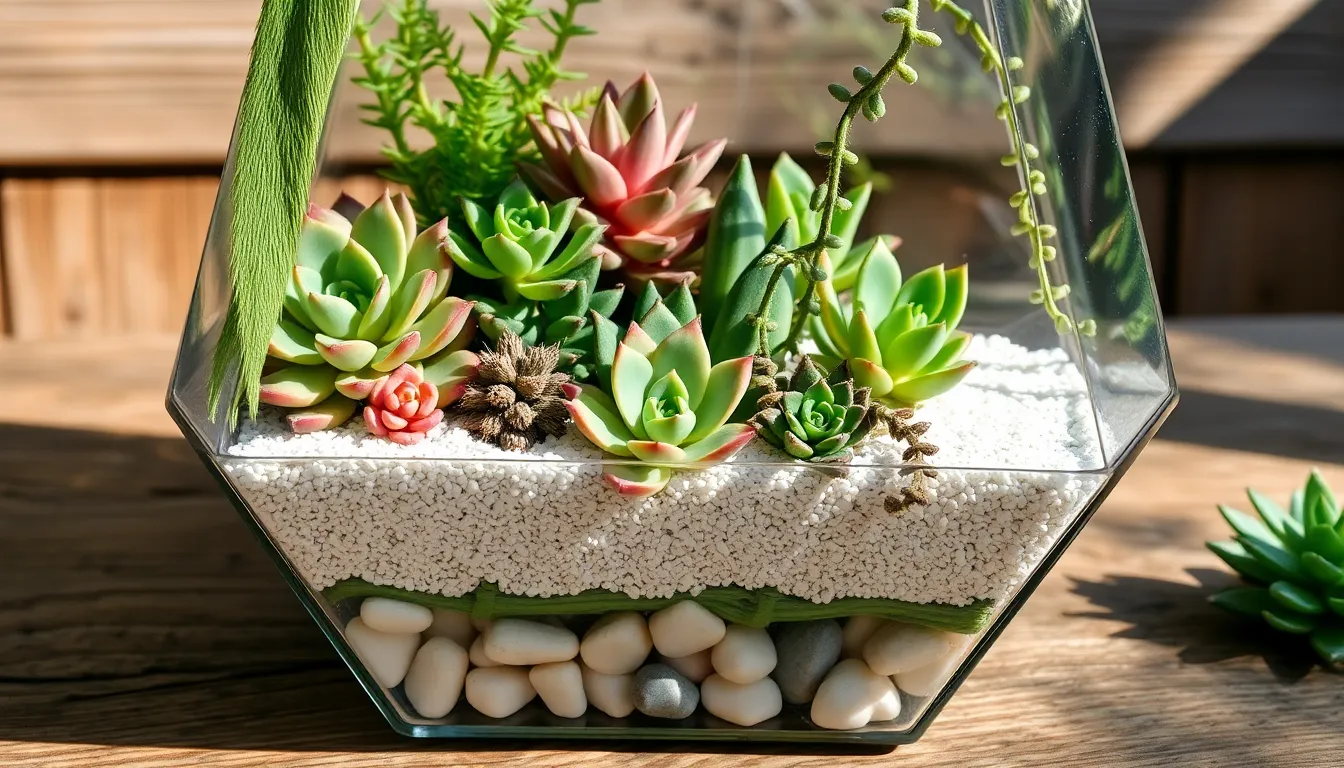Imagine stepping into your garden and being greeted by the vibrant aromas of basil, mint, and rosemary, each plant a testament to your care and creativity. Whether you’re just starting out with your first pot of parsley or you’ve got a thriving herb empire, “13 Unique Herb Garden Tips” is your companion in transforming any space into a lush, aromatic haven.
This guide is packed with innovative ideas that will inspire and empower you, regardless of your experience level, to design a herb garden that’s as functional as it is beautiful. With practical tips tailored to enhance both your gardening skills and your confidence, you’ll discover the joy and satisfaction of cultivating a garden that not only thrives but also elevates your everyday meals and well-being.
Select Sun-Loving Herb Varieties
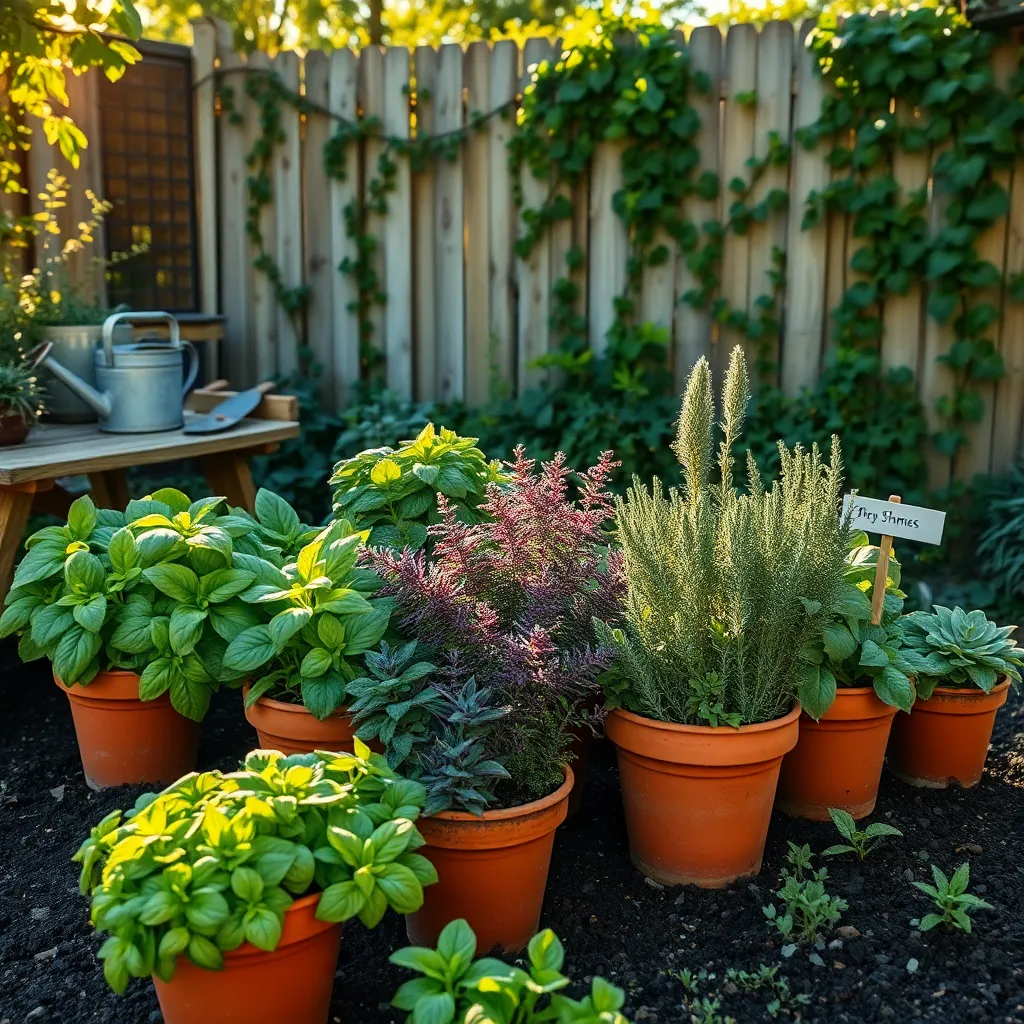
When choosing herbs for a sunny spot in your garden, consider planting rosemary, which thrives in full sun and well-drained soil. This hardy herb prefers infrequent watering, allowing the soil to dry out between sessions to prevent root rot.
Another excellent choice is lavender, which not only loves full sunlight but also rewards you with fragrant blooms. Ensure you plant lavender in sandy or gravelly soil to mimic its native Mediterranean conditions, enhancing its growth and fragrance.
Thyme is a versatile herb that flourishes in sunny locations and can withstand drought conditions. Plant it in a sandy loam soil and prune it regularly to encourage a bushy growth habit, which will yield a more abundant harvest.
For those seeking a culinary staple, basil is an ideal sun-loving herb that grows best in rich, well-drained soil. Keep basil well-watered but not waterlogged, and pinch off the flowers to maintain its flavor and promote leaf growth.
Plant Herbs in Raised Beds
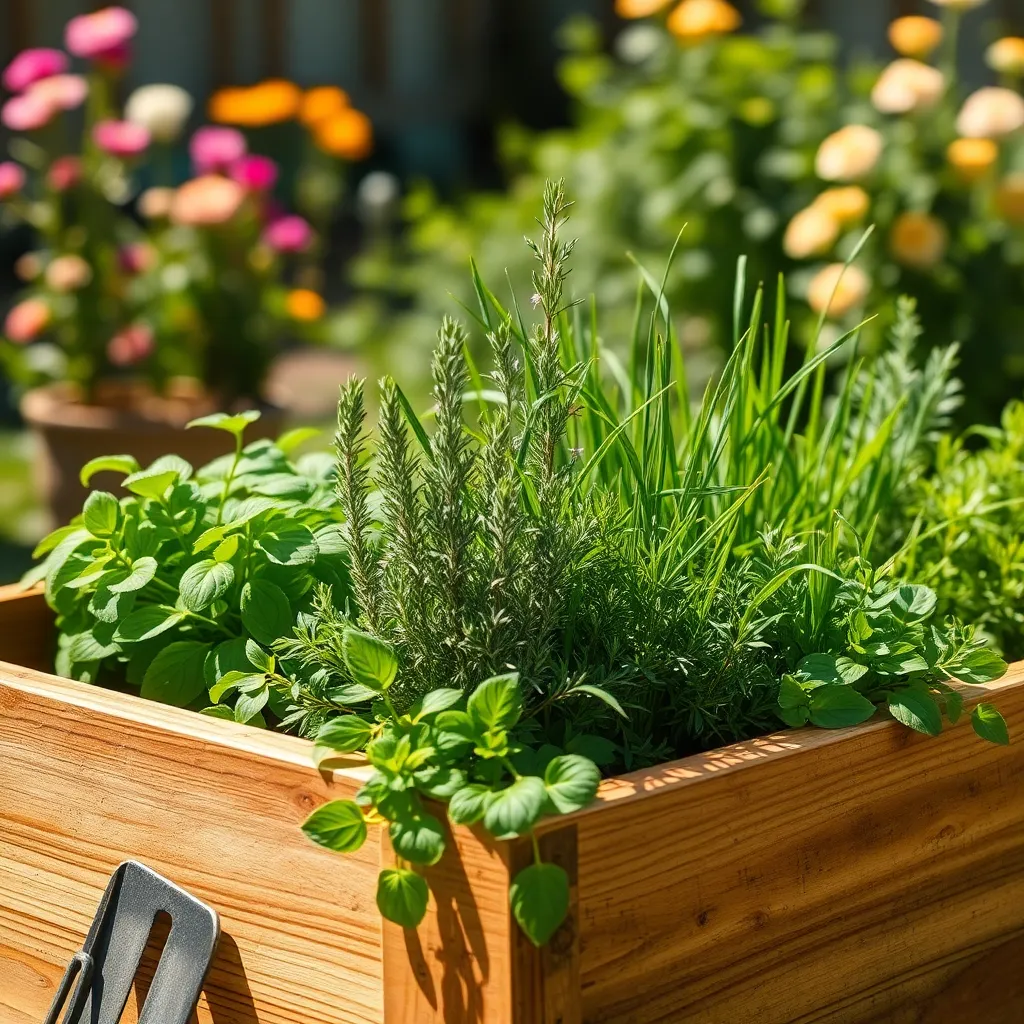
Raised beds offer an excellent way to grow herbs, providing better drainage and soil control. When setting up your raised bed, make sure it is at least 12 inches deep to accommodate root growth.
To ensure optimal growth, fill your raised bed with a soil mix composed of one part garden soil, one part compost, and one part coarse sand or perlite for improved drainage. This mix will supply your herbs with essential nutrients while preventing waterlogging.
Watering frequency can vary, but a good rule of thumb is to water when the top inch of soil feels dry. Herbs like rosemary and thyme prefer slightly drier conditions, while basil and parsley thrive with more consistent moisture.
Gardeners can maximize space by planting herbs with similar needs together. For example, combining Mediterranean herbs such as oregano, rosemary, and lavender in one section can be beneficial, as they all enjoy well-drained soil and full sun.
Use Vertical Space with Planters
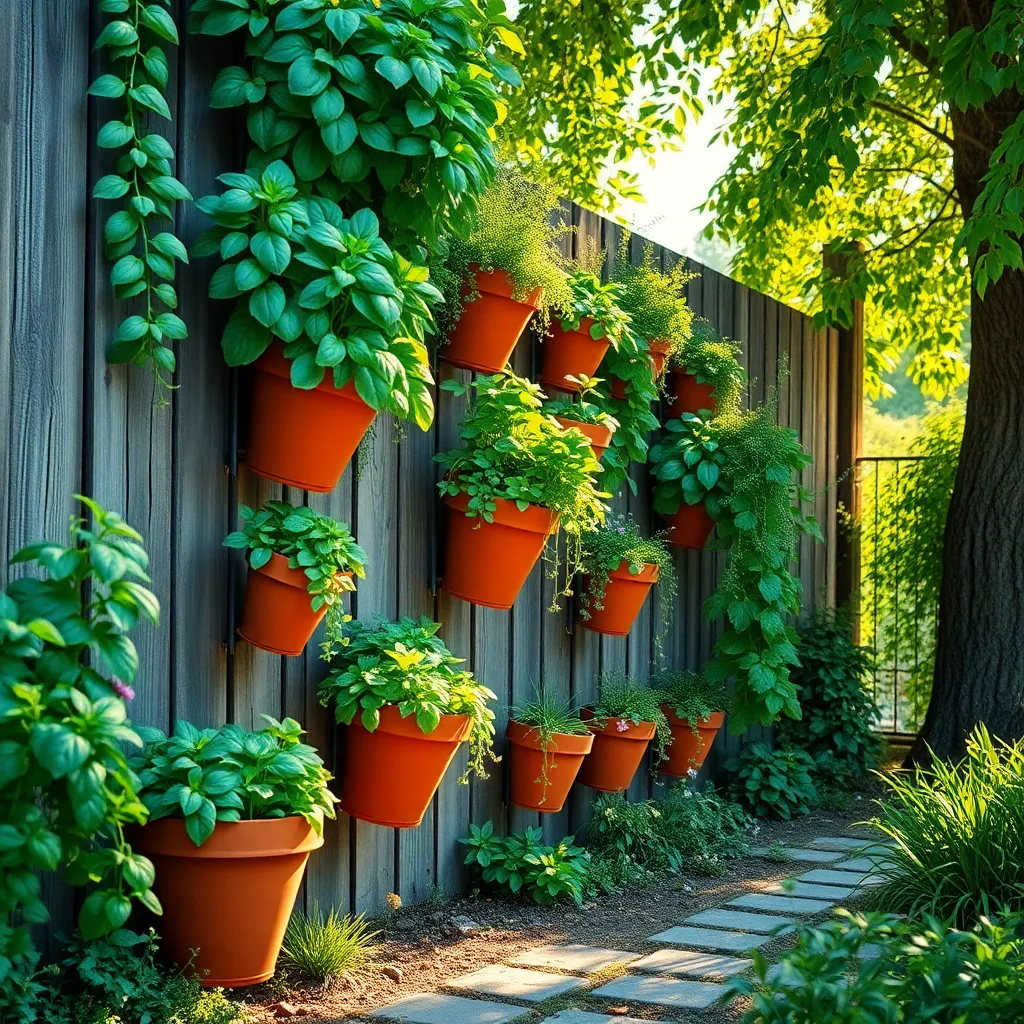
Maximize your garden space by using vertical planters, which can transform limited areas into lush, productive herb gardens. This approach is perfect for small balconies or patios, allowing you to grow a variety of herbs without taking up ground space.
Consider using a tiered planter design, which provides multiple levels for different types of herbs. Ensure each tier receives adequate sunlight and water, as herbs like basil and thyme thrive in sunny conditions.
For beginners, start with easy-to-grow herbs such as mint and parsley in your vertical planters. These herbs are hardy and require minimal care, making them ideal for those new to gardening.
Advanced gardeners might explore hydroponic systems or wall-mounted planters to grow more exotic herbs like lemongrass or rosemary. These systems can optimize growth by providing controlled environments, ensuring your herbs are healthy and flavorful.
Incorporate Companion Planting Techniques
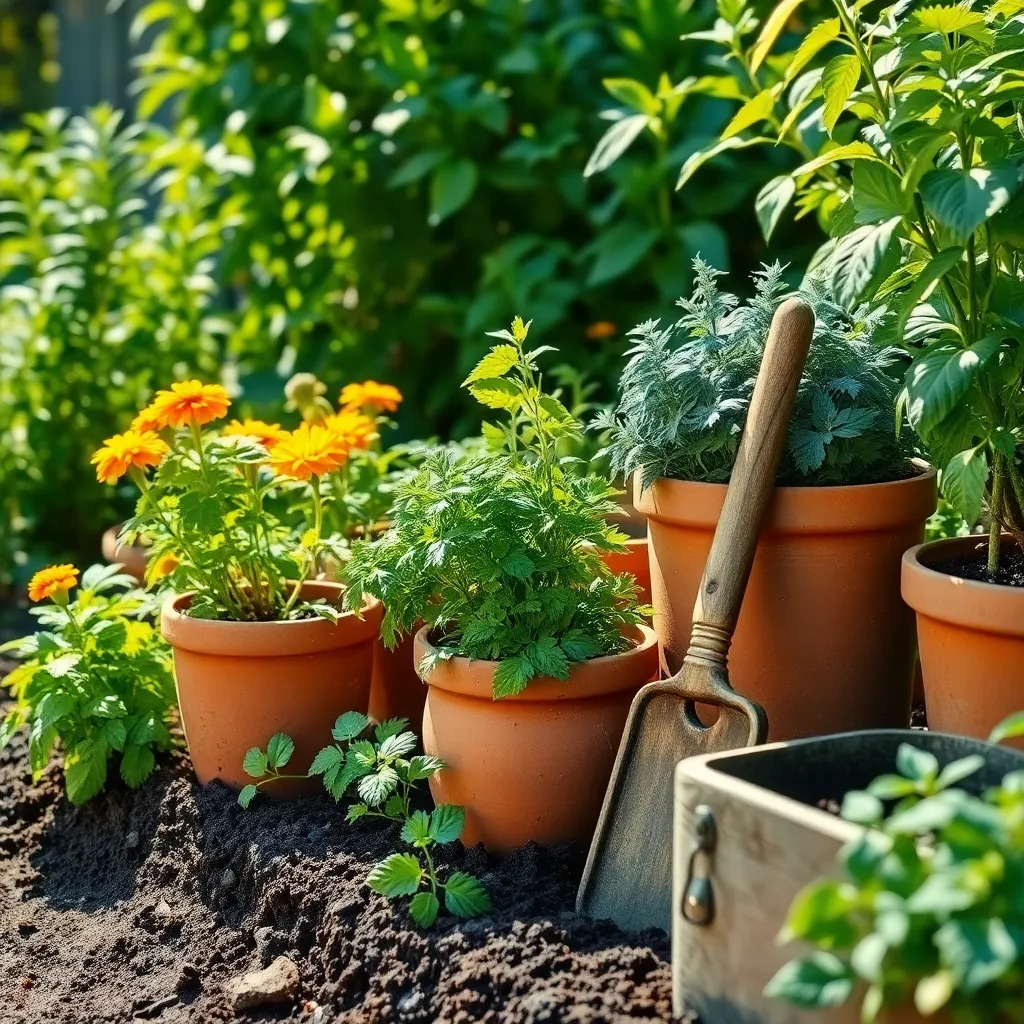
Companion planting is an excellent technique to maximize the productivity of your herb garden. By strategically pairing plants that benefit each other, you can enhance growth and deter pests naturally.
For example, planting basil alongside tomatoes can improve the flavor of the tomatoes and repel harmful insects. Basil also thrives in similar growing conditions, needing well-drained soil and regular watering to keep the environment moist but not soggy.
Another effective pairing is parsley and chives, which can enhance each other’s growth while also attracting beneficial insects like bees and butterflies. Both herbs prefer full sun to partial shade and should be kept in soil that is rich in organic matter, such as compost or aged manure.
More advanced gardeners might consider interplanting dill with fennel, as they can encourage biodiversity and attract predatory insects that help control aphid populations. However, ensure each plant has enough space to grow; dill can become quite tall, requiring a bit of support if grown in windy areas.
For those looking to experiment further, try mixing rosemary with sage, as both herbs enjoy similar dry, well-drained soil conditions and can help repel each other’s pests. Keep rosemary in a slightly elevated position if possible, to prevent waterlogging which can lead to root rot.
Rotate Herb Crops Annually

Rotating herb crops annually is a powerful technique to maintain soil health and prevent pest buildup. By changing the location of your herbs each year, you disrupt the lifecycle of pests specific to certain plants, thereby reducing the likelihood of infestations.
Begin by planning your herb garden layout with crop rotation in mind, ideally dividing your space into several sections. Each year, move your herbs into a different section, ensuring that no plant occupies the same spot consecutively.
For beginners, start with simple rotations such as moving basil, mint, and cilantro to different spots annually. This practice not only helps in pest control but also allows the soil to recover, as different herbs have varying nutrient needs and root depths.
Advanced gardeners can benefit from incorporating specific plant families into their rotation plan. For example, rotate herbs like rosemary and sage, which prefer drier conditions, with moisture-loving herbs such as parsley and dill to balance soil moisture levels.
Maintaining soil fertility is crucial when practicing crop rotation. Consider adding organic matter, such as compost or well-rotted manure, after moving the herbs to replenish nutrients and improve soil structure.
To ensure success, regularly monitor plant health and soil conditions. By observing how your herbs respond to new locations, you can fine-tune your rotation strategy for even better results in the future.
Harvest Herbs Regularly for Growth
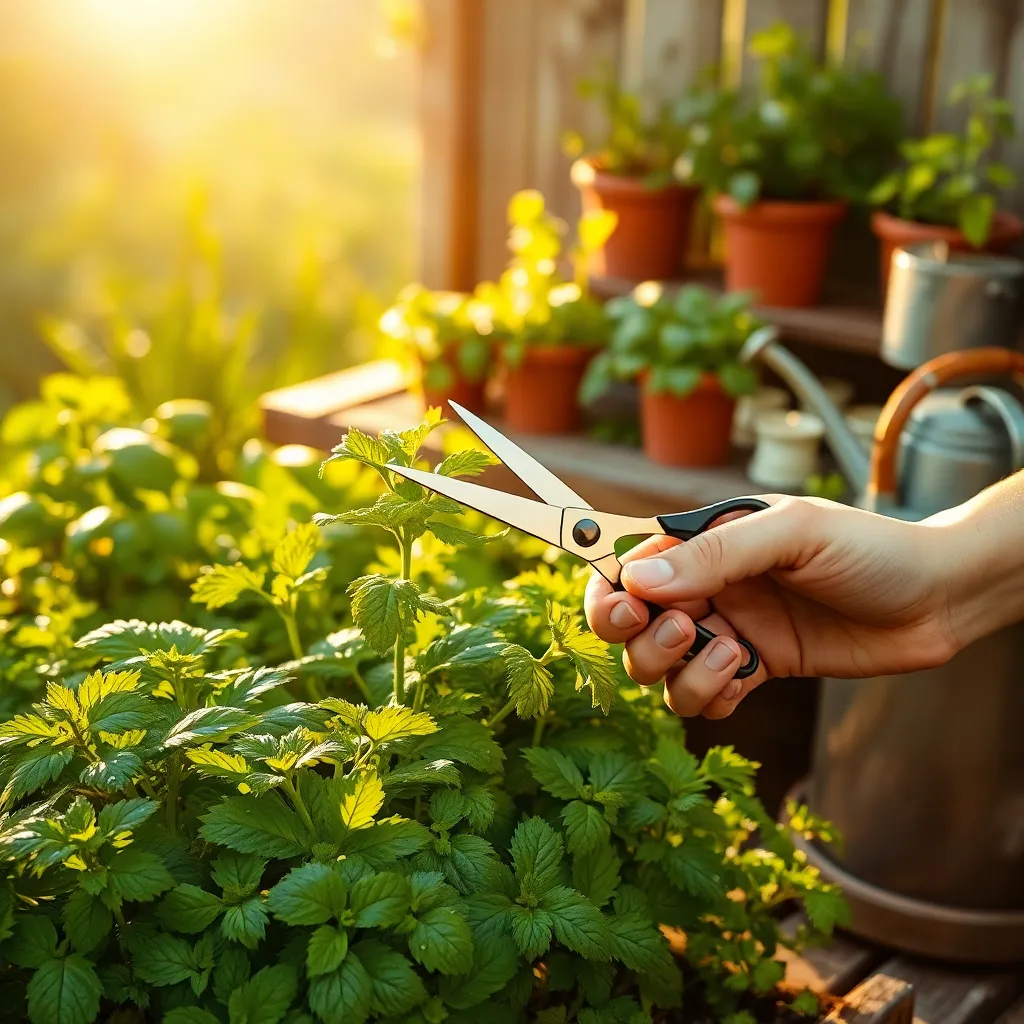
Regularly harvesting herbs is a crucial practice to encourage continuous growth and maintain plant health. When you trim herbs, it stimulates the plant to produce new foliage, leading to a bushier and more productive plant overall.
Begin by snipping herbs like basil, mint, or parsley when they have reached at least 6 inches in height. Use sharp scissors or pruning shears to cut just above a leaf node, which is where new shoots will emerge, ensuring you never remove more than one-third of the plant at a time.
Consistency is key—plan to harvest herbs every couple of weeks during the growing season. This not only prevents plants from becoming leggy or flowering prematurely, which can impact flavor, but also keeps your herb garden thriving.
For more mature plants, like rosemary or thyme, focus on trimming the outer stems, leaving the inner growth to expand. These woody herbs can benefit from a deeper trim annually, which encourages more vigorous new growth in the following season.
Mulch to Retain Soil Moisture
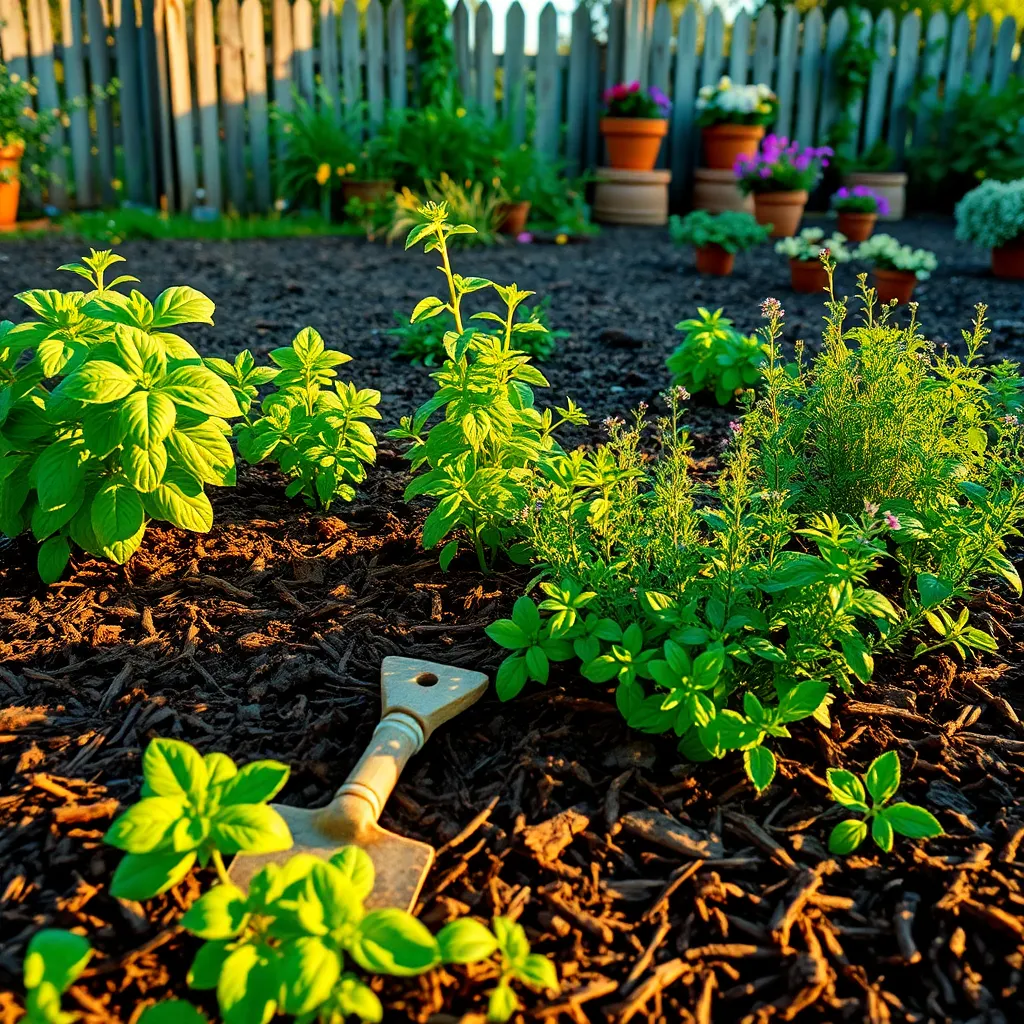
Mulching is an excellent way to help your herb garden thrive by retaining soil moisture. Applying a layer of mulch around your herb plants reduces evaporation and keeps the soil temperature consistent, which is crucial for optimal growth.
Consider using organic mulches such as straw, shredded leaves, or grass clippings, which decompose over time and enrich the soil. Apply a 2 to 3-inch layer around your herbs, ensuring the mulch doesn’t touch the stems to prevent rot.
For those looking to add a decorative touch, bark chips or small stones can be used; however, they don’t improve soil fertility. These materials are best suited for gardens where aesthetics are a priority, but remember that organic options support better overall plant health.
Advanced gardeners might experiment with using living mulches, such as low-growing ground covers that can coexist with herbs. These living mulches offer dual benefits: they keep moisture in the soil while also providing habitat for beneficial insects.
Start Herbs Indoors from Seeds
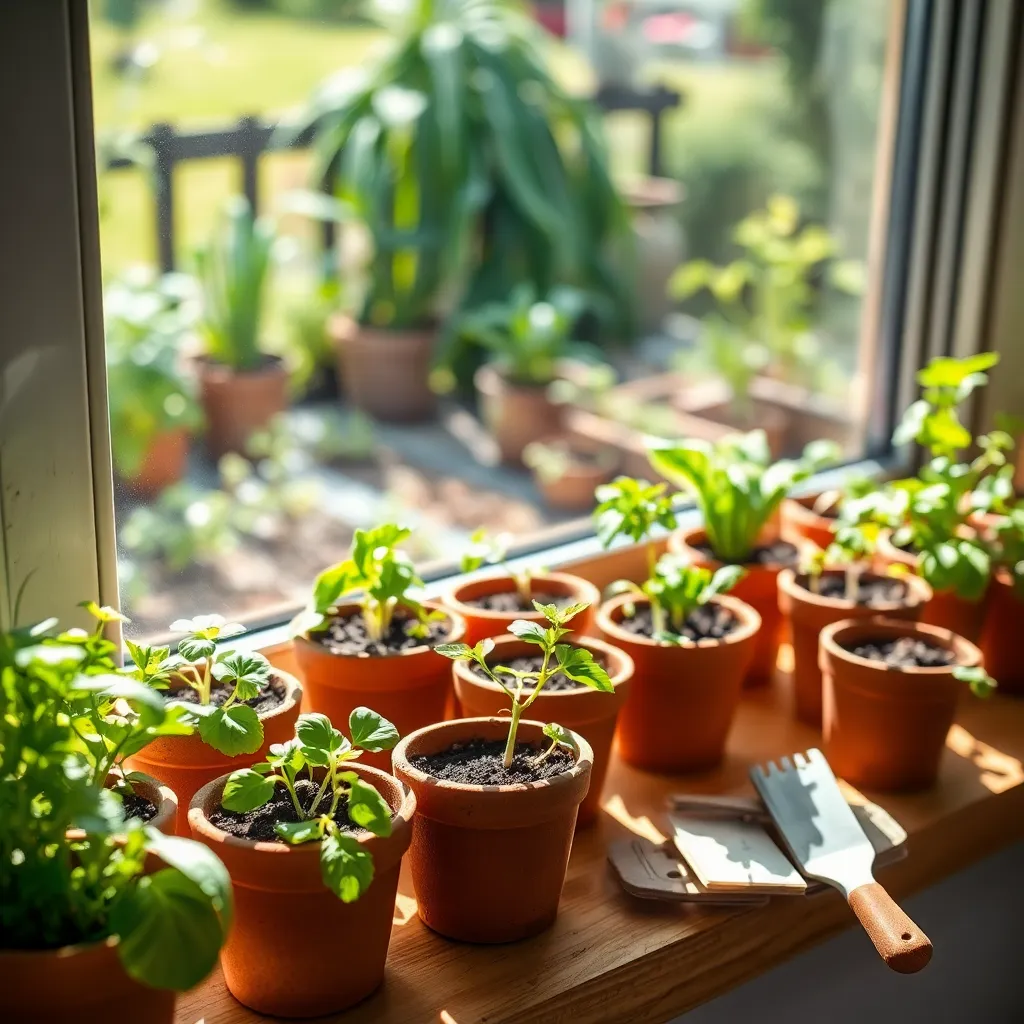
Starting herbs indoors from seeds is a fantastic way to get a head start on your gardening season. To begin, choose a bright window sill or set up grow lights to provide the necessary light for germination.
It’s important to use a well-draining seed-starting mix to ensure successful germination. Avoid using garden soil as it can be too dense and may harbor diseases that can hinder seed growth.
When planting seeds, follow the depth recommendations on the seed packets, which typically range from 1/4 to 1/2 inch deep. Lightly mist the soil with water after planting, keeping it consistently moist but not waterlogged.
For gardeners looking to enhance their skills, consider using a heat mat to maintain a consistent soil temperature of around 70°F, which can speed up germination for many herbs. Once seedlings develop two sets of true leaves, transplant them into individual pots to provide more space for root growth.
Create a Dedicated Herb Spiral
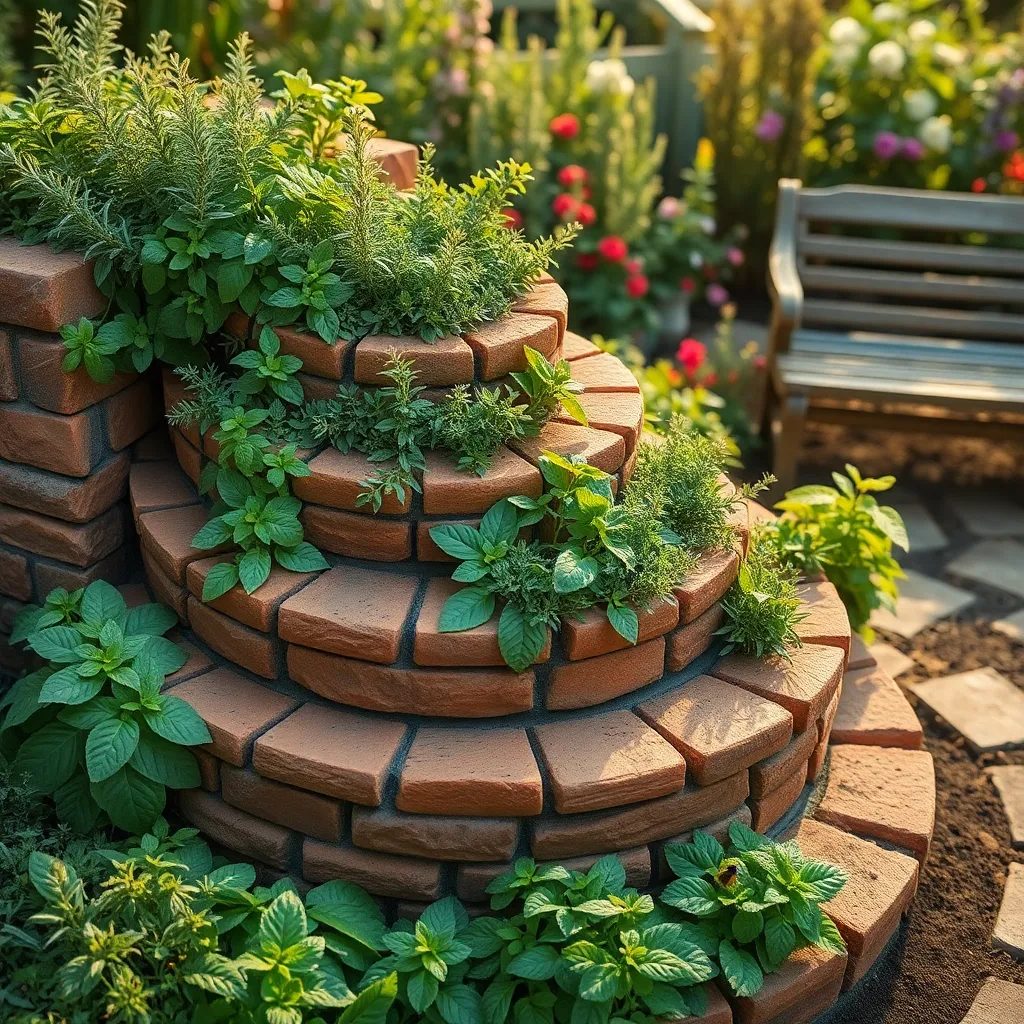
Creating a dedicated herb spiral is an innovative way to grow a variety of herbs in a small space. This design maximizes vertical space and can fit even in tight garden areas, making it perfect for urban gardeners.
Start by selecting a sunny spot in your garden, as most herbs thrive in full sunlight. Gather materials like stones or bricks to construct the spiral, ensuring that they are sturdy and can withstand different weather conditions.
Construct the spiral by forming a base circle and gradually building upwards, ensuring each layer is slightly smaller than the one below. This structure allows you to create different microclimates, with the top being drier and the bottom retaining more moisture, ideal for diverse herb needs.
For the top of the spiral, plant herbs like rosemary and thyme, which prefer drier conditions. At the base, include moisture-loving herbs such as mint and parsley, ensuring they receive the extra water that naturally drains down.
Use a high-quality, well-draining soil mix to fill the spiral, ensuring that your herbs receive the right balance of nutrients and drainage. Water your herb spiral regularly, but adjust the frequency based on the specific needs of each herb, checking the soil moisture to avoid overwatering.
As an advanced tip, consider adding a small pond or water feature at the base of your spiral to create a unique focal point and support beneficial wildlife. This feature can further enhance the microclimates within your herb spiral, offering more variety in your garden.
Prune Herbs to Encourage Bushiness
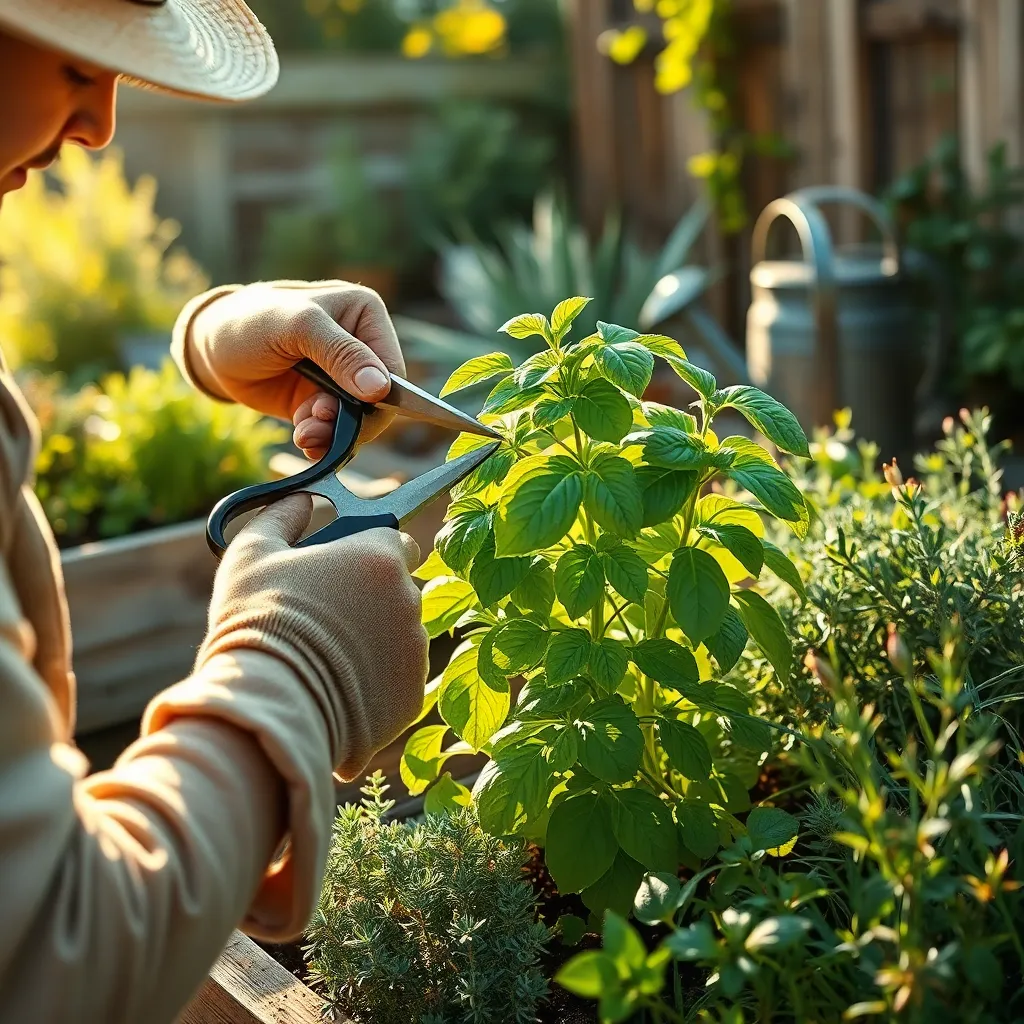
Pruning herbs is an essential practice to encourage bushy growth, and it should be done regularly to keep your plants healthy. By cutting back the stems, you stimulate the plant to produce more foliage, leading to a fuller and more productive herb garden.
Start by using clean, sharp scissors or pruning shears to avoid damaging the plant. Trim just above a leaf node, which is the point where leaves attach to the stem, to promote branching and new growth.
For beginners, basil and mint are excellent herbs to practice pruning, as they respond well to regular trimming. Pinch off the top few inches of growth when the plants are about 6 inches tall, and repeat this process every few weeks for optimal results.
More experienced gardeners might explore advanced pruning techniques, such as cutting back woody herbs like rosemary or thyme. These can be pruned more aggressively in early spring to maintain their shape and encourage dense growth throughout the season.
Feed with Organic Fertilizers
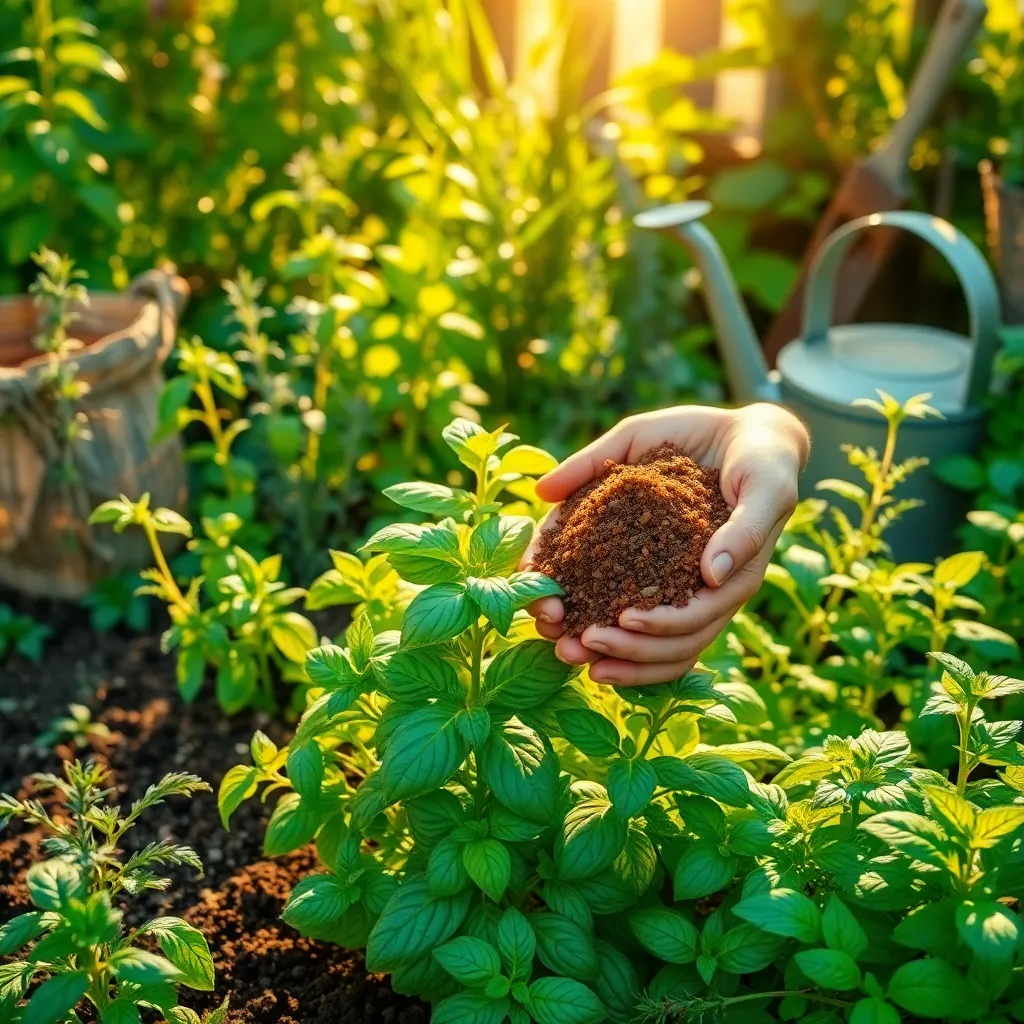
Organic fertilizers are a fantastic way to ensure your herb garden thrives, as they enrich the soil naturally without harmful chemicals. For beginners, a simple compost tea can be an excellent start; it’s easy to make by steeping compost in water, providing a nutrient-rich boost for your plants.
Experienced gardeners might explore using fish emulsion or seaweed extract, which are both packed with nutrients and trace elements. These liquid fertilizers can be applied every two to four weeks, depending on the growth rate and type of herbs you are cultivating.
It’s important to apply organic fertilizers in moderation, as over-fertilizing can lead to lush growth with less flavor. Ensure your soil is well-draining; herbs like thyme and rosemary prefer sandy loam, while basil thrives in a richer, loamy soil.
Consider using a slow-release organic fertilizer, such as bone meal or blood meal, to provide a steady nutrient supply. Incorporating these into the soil at planting time can give your herbs a strong start, setting the foundation for healthy growth.
Protect Herbs with Natural Pest Control
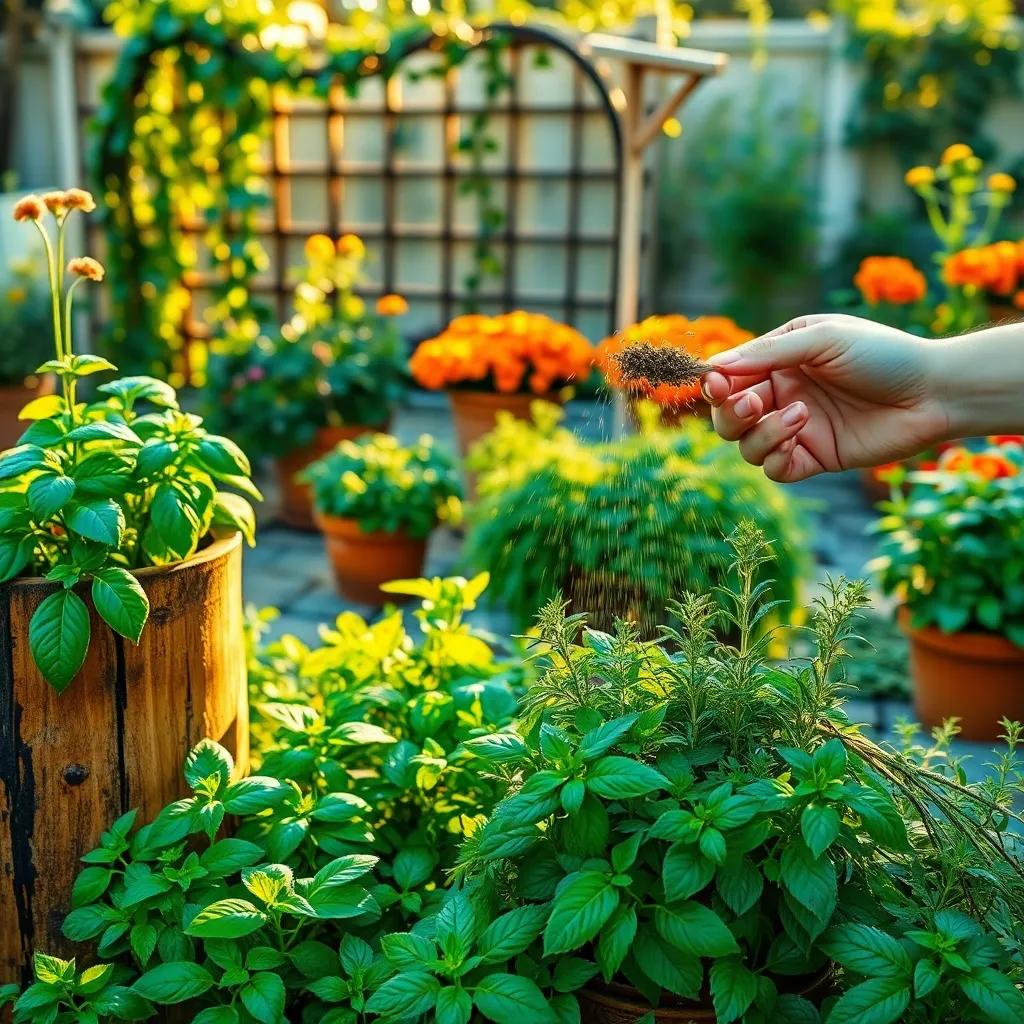
Protecting your herbs from pests can be achieved effectively with natural methods that are gentle on the environment. Companion planting is a great strategy; consider planting basil near tomatoes to repel aphids or chives alongside carrots to deter carrot flies.
Another natural pest control method involves using homemade sprays. For instance, a simple garlic spray can be made by blending two cloves of garlic with a quart of water and then straining the mixture before applying it to your herbs.
Encouraging beneficial insects is also a smart way to maintain a healthy garden ecosystem. Planting flowers like marigolds and alyssum can attract ladybugs and lacewings, which are natural predators of many common herb pests.
For those who want to take it a step further, introducing predatory nematodes into your soil can help control soil-dwelling pests. These microscopic organisms are safe for humans but lethal to many harmful insects that might otherwise feast on your herbs.
Label Each Herb with Markers
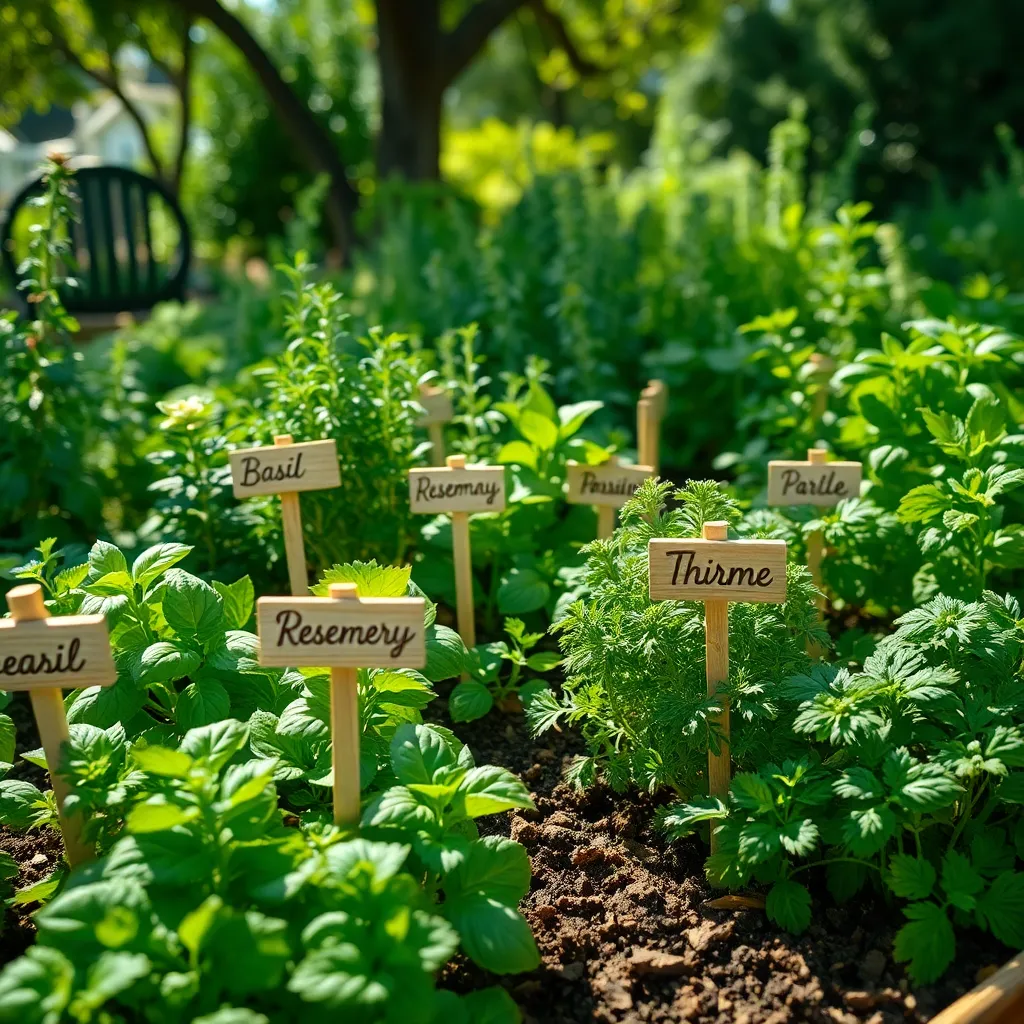
Labeling each herb in your garden with markers is a simple yet effective way to keep track of your plants. This practice not only helps you identify your herbs at a glance but also enhances your gardening experience by reducing confusion, especially if you are growing multiple varieties.
Choose durable, weather-resistant markers that can withstand the elements. Consider using materials like wood, metal, or sturdy plastic, and ensure the labels are legibly written using a permanent marker or engraved for longevity.
For an added touch of creativity, craft your own unique markers using materials you have at home. This could be as simple as painting rocks with herb names or repurposing old flatware by stamping letters onto them.
When labeling, include both the common and scientific names of the herbs, as this information can be invaluable for both beginners and seasoned gardeners. Additionally, you might want to note specific care instructions, such as ideal sunlight exposure or watering needs, directly on the marker.
Conclusion: Growing Success with These Plants
In exploring the vibrant world of herb gardening, we’ve uncovered 13 unique tips that mirror key relationship concepts. Among these are the importance of nurturing growth, understanding individual needs, cultivating patience, and embracing diversity. Just as herbs require specific conditions to thrive, relationships flourish when we pay attention to the unique rhythms and preferences of our partners. We’ve also touched on the value of communication, the role of shared goals, and the significance of continuous learning.
As you reflect on these insights, consider taking a moment today to initiate a heartfelt conversation with your partner, focusing on one area where you both can foster growth. This simple step can ignite a deeper connection and set the stage for mutual flourishing.
To ensure these valuable lessons remain at your fingertips, bookmark this article for future reference. Having a ready resource can be a guiding light as you navigate the evolving landscape of your relationship.
Looking ahead, remember that every relationship has the potential for a bountiful harvest when nurtured with love, effort, and understanding. Your journey toward relationship success starts now, one mindful action at a time.

